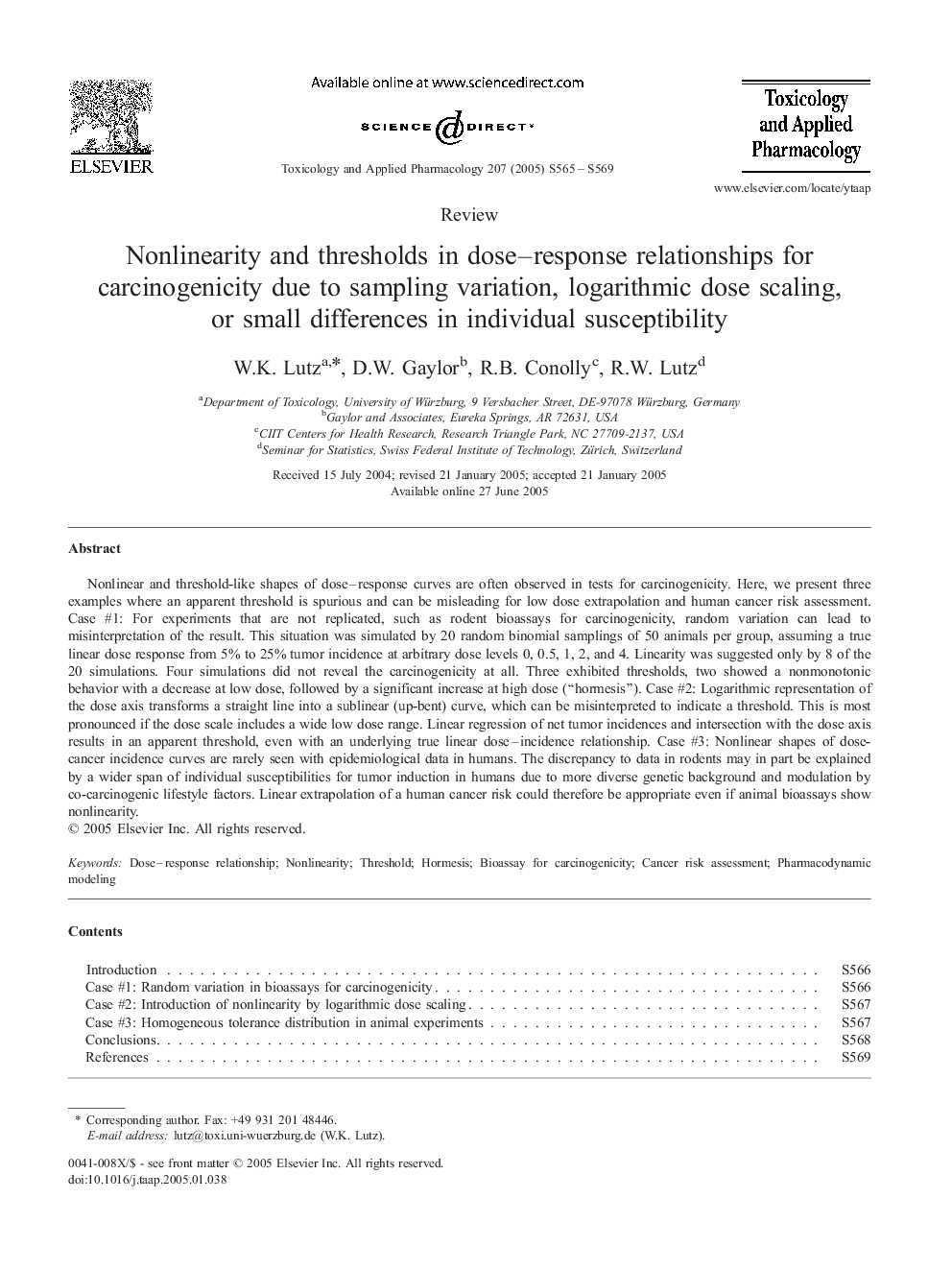| کد مقاله | کد نشریه | سال انتشار | مقاله انگلیسی | نسخه تمام متن |
|---|---|---|---|---|
| 9017793 | 1128665 | 2005 | 5 صفحه PDF | دانلود رایگان |
عنوان انگلیسی مقاله ISI
Nonlinearity and thresholds in dose-response relationships for carcinogenicity due to sampling variation, logarithmic dose scaling, or small differences in individual susceptibility
دانلود مقاله + سفارش ترجمه
دانلود مقاله ISI انگلیسی
رایگان برای ایرانیان
کلمات کلیدی
موضوعات مرتبط
علوم زیستی و بیوفناوری
علوم محیط زیست
بهداشت، سم شناسی و جهش زایی
پیش نمایش صفحه اول مقاله

چکیده انگلیسی
Nonlinear and threshold-like shapes of dose-response curves are often observed in tests for carcinogenicity. Here, we present three examples where an apparent threshold is spurious and can be misleading for low dose extrapolation and human cancer risk assessment. Case #1: For experiments that are not replicated, such as rodent bioassays for carcinogenicity, random variation can lead to misinterpretation of the result. This situation was simulated by 20 random binomial samplings of 50 animals per group, assuming a true linear dose response from 5% to 25% tumor incidence at arbitrary dose levels 0, 0.5, 1, 2, and 4. Linearity was suggested only by 8 of the 20 simulations. Four simulations did not reveal the carcinogenicity at all. Three exhibited thresholds, two showed a nonmonotonic behavior with a decrease at low dose, followed by a significant increase at high dose (“hormesis”). Case #2: Logarithmic representation of the dose axis transforms a straight line into a sublinear (up-bent) curve, which can be misinterpreted to indicate a threshold. This is most pronounced if the dose scale includes a wide low dose range. Linear regression of net tumor incidences and intersection with the dose axis results in an apparent threshold, even with an underlying true linear dose-incidence relationship. Case #3: Nonlinear shapes of dose-cancer incidence curves are rarely seen with epidemiological data in humans. The discrepancy to data in rodents may in part be explained by a wider span of individual susceptibilities for tumor induction in humans due to more diverse genetic background and modulation by co-carcinogenic lifestyle factors. Linear extrapolation of a human cancer risk could therefore be appropriate even if animal bioassays show nonlinearity.
ناشر
Database: Elsevier - ScienceDirect (ساینس دایرکت)
Journal: Toxicology and Applied Pharmacology - Volume 207, Issue 2, Supplement, 1 September 2005, Pages 565-569
Journal: Toxicology and Applied Pharmacology - Volume 207, Issue 2, Supplement, 1 September 2005, Pages 565-569
نویسندگان
W.K. Lutz, D.W. Gaylor, R.B. Conolly, R.W. Lutz,